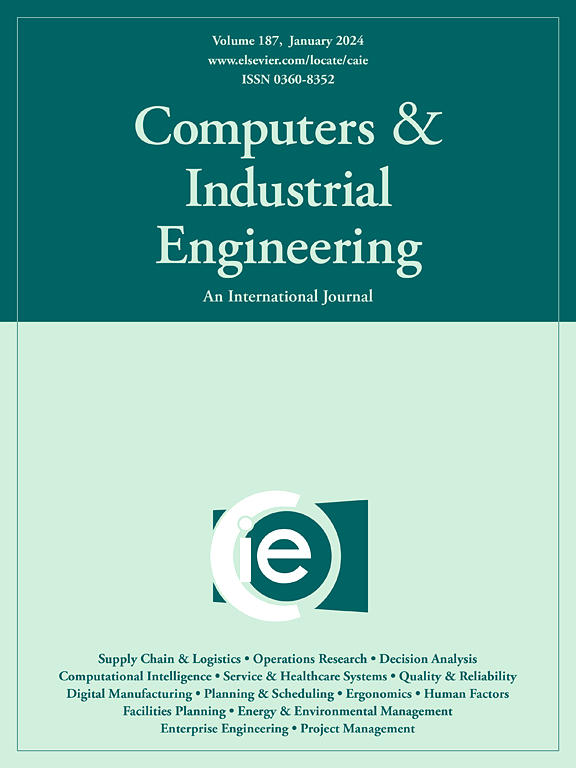Temporal transaction network anomaly detection for Industrial Internet of Things with federated graph neural networks
IF 6.7
1区 工程技术
Q1 COMPUTER SCIENCE, INTERDISCIPLINARY APPLICATIONS
引用次数: 0
Abstract
The Industrial Internet of Things (IIoT) has experienced significant advancements in recent years, resulting in a considerable increase in the volume of data generated by interconnected devices. This surge in data has created new opportunities to enhance the quality of service in machine learning applications within the IIoT through data sharing. Among these applications, anomaly detection in transaction networks utilizing graph neural networks (GNNs) has emerged as a prominent research topic. However, most current anomaly detection methods either focus exclusively on single-faceted transaction information or assume that multiple types of transaction network data are centrally stored or shared. In the field of IIoT scenario, privacy concerns and legal restrictions frequently hinder data centralization, resulting in data islands, which refer to decentralized multisource transaction information. Therefore, we propose a novel federated GNNs framework for the temporal transaction network anomaly detection, designated as FedGTAD. Specifically, the training process is bifurcated: client-side privacy temporal transaction network feature extraction is conducted locally at its corresponding client, while privacy-protected feature aggregation from all clients occurs on a trusted server. To facilitate more effective anomaly detection, each client initially models edge features and temporal transaction information as node attributes, along with network snapshots for subsequent graph feature computation with GNNs. During the integration process, the server integrates the node-level embedding and computes multisource transaction network features from all clients following a differential privacy mechanism to ensure client-side data security. The experimental results on three decentralized multisource transaction networks demonstrated that FedGTAD outperforms baseline methods by 0.9% to 2.7% in accuracy. Overall, FedGTAD offers a promising approach for mining decentralized multisource transaction networks while preserving privacy in anomaly detection tasks.
基于联邦图神经网络的工业物联网时序事务网络异常检测
工业物联网(IIoT)近年来取得了重大进展,导致互联设备产生的数据量大幅增加。数据的激增为通过数据共享提高工业物联网内机器学习应用程序的服务质量创造了新的机会。在这些应用中,利用图神经网络(gnn)在交易网络中进行异常检测已成为一个突出的研究课题。然而,目前大多数异常检测方法要么只关注单一的事务信息,要么假设多种类型的事务网络数据集中存储或共享。在工业物联网场景中,隐私问题和法律限制往往阻碍数据集中,导致数据孤岛,即分散的多源交易信息。因此,我们提出了一种新的联邦gnn框架,用于时间交易网络异常检测,称为FedGT2AD。具体来说,训练过程分为两个部分:客户端隐私时态交易网络特征提取在其对应的客户端本地进行,而来自所有客户端的隐私保护特征聚合在可信服务器上进行。为了更有效地进行异常检测,每个客户端最初都将边缘特征和临时交易信息建模为节点属性,以及随后使用gnn进行图特征计算的网络快照。在集成过程中,服务器集成节点级嵌入,并根据差异隐私机制计算所有客户端的多源事务网络特性,以确保客户端数据安全。在三个分散的多源交易网络上的实验结果表明,FedGT2AD的准确率比基线方法高0.9%至2.7%。总体而言,FedGT2AD为挖掘分散的多源交易网络提供了一种有前途的方法,同时在异常检测任务中保持隐私。
本文章由计算机程序翻译,如有差异,请以英文原文为准。
求助全文
约1分钟内获得全文
求助全文
来源期刊

Computers & Industrial Engineering
工程技术-工程:工业
CiteScore
12.70
自引率
12.70%
发文量
794
审稿时长
10.6 months
期刊介绍:
Computers & Industrial Engineering (CAIE) is dedicated to researchers, educators, and practitioners in industrial engineering and related fields. Pioneering the integration of computers in research, education, and practice, industrial engineering has evolved to make computers and electronic communication integral to its domain. CAIE publishes original contributions focusing on the development of novel computerized methodologies to address industrial engineering problems. It also highlights the applications of these methodologies to issues within the broader industrial engineering and associated communities. The journal actively encourages submissions that push the boundaries of fundamental theories and concepts in industrial engineering techniques.
 求助内容:
求助内容: 应助结果提醒方式:
应助结果提醒方式:


